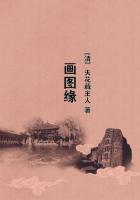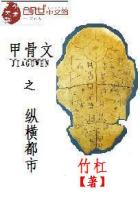In the days of King Edward III a code of laws relating to trialby battle had been compiled for one of his sons, Thomas ofWoodstock. In this work each and every detail, to the mostminute, had been arranged and fixed, and from that time judicialcombats had been regulated in accordance with its mandates.
It was in obedience to this code that Myles Falworth appeared atthe east gate of the lists (the east gate being assigned by lawto the challenger), clad in full armor of proof, attended byGascoyne, and accompanied by two of the young knights who hadacted as his escort from Scotland Yard.
At the barriers he was met by the attorney Willingwood, the chieflawyer who had conducted the Falworth case before the High Courtof Chivalry, and who was to attend him during the administrationof the oaths before the King.
As Myles presented himself at the gate he was met by theConstable, the Marshal, and their immediate attendants. TheConstable, laying his hand upon the bridle-rein, said, in a loudvoice: "Stand, Sir Knight, and tell me why thou art come thusarmed to the gates of the lists. What is thy name? Wherefore artthou come?"Myles answered, "I am Myles Falworth, a Knight of the Bath bygrace of his Majesty King Henry IV and by his creation, and docome hither to defend my challenge upon the body of William BushyBrookhurst, Earl of Alban, proclaiming him an unknightly knightand a false and perjured liar, in that he hath accused GilbertReginald, Lord Falworth, of treason against our beloved Lord, hisMajesty the King, and may God defend the right!"As he ended speaking, the Constable advanced close to his side,and formally raising the umbril of the helmet, looked him in theface. Thereupon, having approved his identity, he ordered thegates to be opened, and bade Myles enter the lists with hissquire and his friends.
At the south side of the lists a raised scaffolding had beenbuilt for the King and those who looked on. It was not unlikethat which had been erected at Devlen Castle when Myles had firstjousted as belted knight--here were the same raised seat for theKing, the tapestries, the hangings, the fluttering pennons, andthe royal standard floating above; only here were no fair-facedladies looking down upon him, but instead, stern-browed Lords andknights in armor and squires, and here were no merry laughing andbuzz of talk and flutter of fans and kerchiefs, but all was veryquiet and serious.
Myles riding upon his horse, with Gascoyne holding thebridle-rein, and his attorney walking beside him with his handupon the stirrups, followed the Constable across the lists to anopen space in front of the seat where the King sat. Then, havingreached his appointed station, he stopped, and the Constable,advancing to the foot of the stair-way that led to the daisabove, announced in a loud voice that the challenger had enteredthe lists.
"Then called the defendant straightway," said the King, "for noondraweth nigh."The day was very warm, and the sun, bright and unclouded, shonefiercely down upon the open lists. Perhaps few men nowadays couldbear the scorching heat of iron plates such as Myles wore, fromwhich the body was only protected by a leathern jacket and hose.
But men's bodies in those days were tougher and more seasoned tohardships of weather than they are in these our times. Mylesthought no more of the burning iron plates that incased him thana modern soldier thinks of his dress uniform in warm weather.














